|
|
|
Sort Order |
|
|
|
Items / Page
|
|
|
|
|
|
|
| Srl | Item |
| 1 |
ID:
167532


|
|
|
|
|
| Summary/Abstract |
The Indian Ocean is home to some of the most extensive coastal blue carbon ecosystems on the planet. Together, the nations within and surrounding this ocean basin contain approximately 50% (an estimated 76,275 km2) of the world’s mangrove forests and a large, but unknown, proportion of its seagrass meadows. The nations of the Indian Ocean have an opportunity to be world leaders in restoration and protection of these ecosystems, which can help mitigate climate change, enhance livelihoods and protect shorelines from erosion and storm damage. Already, Indian Ocean nations are showing leadership by acknowledging blue carbon ecosystems in their Nationally Determined Contributions, and by championing efforts to establish some of the largest blue carbon restoration projects globally. However, more can be done. We outline a research agenda that will pave the way for effective evidence-based policy in the Indian Ocean, by reducing uncertainty and providing the tools and knowledge needed.
|
|
|
|
|
|
|
|
|
|
|
|
|
|
|
|
| 2 |
ID:
066888
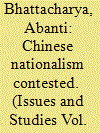

|
|
|
| 3 |
ID:
174828
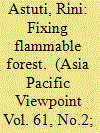

|
|
|
|
|
| Summary/Abstract |
Peatland fires and the impact of transboundary haze are often intertwined with socio‐environmental externalities of neoliberal forest governance and overlapping systems of resource property rights in Indonesia. New peatland governance strategies are emerging to address fires and haze by reorganising peatland management using a more ecologically relevant scale that territorialises peatland according to its hydrological characteristics. Employing the concept of the eco‐scalar fix, this paper interrogates rescaling peatland governance as a strategy to address the socio‐ecological crisis associated with the conversion of peatland into mono‐agricultural land. However, rescaling peatland governance entails the risk of merely displacing socio‐environmental crises to areas considered less ecologically important rather than addressing them. Drawing on a case study of a peatland restoration in Riau, Indonesia, this paper shows how emerging hybrid forms of peatland governance can address the environmental externalities that have unintentionally been created. This hybrid form of peatland governance has pressured actors across multiple types of property to rework the ways that environmental commons are controlled and accessed.
|
|
|
|
|
|
|
|
|
|
|
|
|
|
|
|
| 4 |
ID:
142619
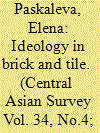

|
|
|
|
|
| Summary/Abstract |
This study analyses the impact of politics on urban development and, in particular, on Timurid heritage in present-day Uzbekistan. It outlines the problem of landscape manipulation for the advancement of a political ideology. After presenting a brief overview of Tsarist and Soviet restoration practices, the article focuses on the post-Soviet nation-building schemes through public iconography, urban renewal measures and heritage construction. Architectural and epigraphic restorations of Timurid monuments in Samarqand and new constructions in Tashkent provide a valuable illustrative framework. As world heritage sites, the Samarqand monuments are examined both in their historical and current socio-political contexts; the role of UNESCO is also analysed. The study benefits from and contributes to critical heritage studies and urban development as a narrative of power-making and relational space.
|
|
|
|
|
|
|
|
|
|
|
|
|
|
|
|
| 5 |
ID:
084653


|
|
|
| 6 |
ID:
131411
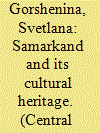

|
|
|
|
|
| Publication |
2014.
|
| Summary/Abstract |
This article is concerned with the creation, by the Russian colonial administration, Russian researchers and photographers/artists, of a corpus of 'historical monuments' of Samarkand in the first decades after the conquest of the city. It uses travelogues, administrative reports, memoirs, the periodical press and artistic productions to determine the mechanism of selection of representative monuments, defined as the 'cultural heritage' of Russian Turkestan and, indirectly, of the Russian Empire. The internal logic of 'patrimonialization', initiated from above and ideologically engaged, becomes more obvious when it is juxtaposed against native understandings of the significance of monuments, European practices, and the political projects of the Russian Empire.
|
|
|
|
|
|
|
|
|
|
|
|
|
|
|
|
| 7 |
ID:
087855
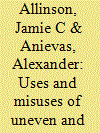

|
|
|
|
|
| Publication |
2009.
|
| Summary/Abstract |
A central concern of much contemporary Marxist scholarship in international relations (IR) is to internally relate global capitalism and the state system without reducing one of these systems to an epiphenomenon of the other. A recent attempt at this is Justin Rosenberg's reformulation of Leon Trotsky's idea of uneven and combined development (U&CD). This article examines the internal relations of 'unevenness' and 'combination' as presented by Trotsky and reworked by Rosenberg. From this anatomization of the concept, we focus on the problematic status of U&CD as a transhistorical general abstraction arising from the exchange between Callinicos and Rosenberg (Cambridge Review of International Affairs, 22:1 2008, 77-112) and suggest our own possible solution. We argue that while the uneven and combined nature of historical development represents a truly transhistorical phenomenon, its distinct causal determinations, articulated and expressed through inter-societal competition, are only fully activated under the specific socio-historical conditions of generalized commodity production. These theoretical points are illuminated through three specific historical examples (the Meiji Restoration, the 'Eastern Question' and the origins of the two World Wars). Finally, we illustrate some of the dangers of analytical overextension found in Rosenberg's own ambiguous use of U&CD.
|
|
|
|
|
|
|
|
|
|
|
|
|
|
|
|
|
|
|
|
|